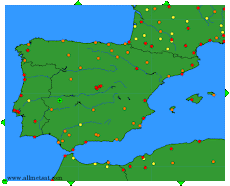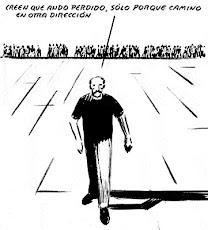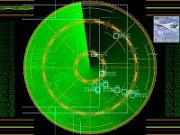viernes, 23 de marzo de 2012
PARALLEL RUNWAY OPERATION: EFFICIENT, SAFE AND COST EFFECTIVE, BUT NOT AT MADRID-BARAJAS INTERNATIONAL AIRPORT
This article, published in SKYbrary, deals with Parallel Runway Operation, as it is also considered in the Spanish legislation (Reglamento de Circulación Aérea).
The objective of operating on parallel or near-parallel runways (non-intersecting runways whose extended center lines have an angle of convergence/divergence of 15 degrees or less) is to increase capacity and gain operational flexibility using simultaneously different runways for take-offs and landings, as in London-Heathrow International Airport.
Many airports have implemented parallel runway operation to increase capacity (number of operations per hour) while maintaining high safety operational standards and requirements. Indeed the most efficient and widespread airport design is a set of parallel or near-parallel runways and a complementary set of intersecting runways used only for special wind conditions.
Madrid-Barajas International Airport consists of two intersecting pairs of parallel runways whose extended center lines have an angle of convergence/divergence of 38 degrees. These runways operate at the same time: one pair of runways for take-offs and the other for landings.
These are the so-called intersecting (intersecting or non-intersecting runways whose extended center lines have an angle of convergence/divergence of more than 15 degrees) simultaneous and segregated approaches and departures, a dangerous invention of the Spanish civil aviation engineers that resembles a highway crossing where the movement of traffic occurs at the same level and is not properly regulated by an authorized traffic officer or by traffic-control signals.
While parallel runway operation increases capacity and operational safety and flexibility, Madrid-Barajas International Airport intersecting simultaneous and segregated approaches and departures penalize capacity and operational flexibility and violate operational safety ICAO regulations: Annex 14 Aerodromes, Doc 4444 PANS-ATM, Doc 8168 PANS-OPS and Doc 9643 Manual on Simultaneous Operations on Parallel or near parallel Instrument Runways (SOIR).
Parallel Runway Operation
Source: www.skybrary.aero
Categories: Runway Incursion | Loss of Separation | Operational Issues
Objective
The main objective of the implementation of simultaneous operations on parallel or near-parallel runways is to increase runway capacity and aerodrome flexibility. The largest increase in arrival capacity is achieved through the use of independent approaches to parallel or near-parallel runways.
Under IFR, the safety of parallel runway operations is affected by several factors such as the accuracy of the surveillance radar monitoring system, the ability of controllers to intervene when an aircraft deviates from the ILS localizer course, the precision with which aircraft can navigate to the runway, and the time for reaction by the controller, or the pilot and/or the aircraft.
Modes of Operation
There are variety of modes of operation associated with the use of parallel or near-parallel instrument runways:
Simultaneous parallel approaches
- Mode 1, independent parallel approaches: simultaneous approaches to parallel instrument runways where radar separation minima are not prescribed between aircraft using adjacent ILS; and
- Mode 2, dependent parallel approaches: simultaneous approaches to parallel instrument runways where radar separation minima between aircraft using adjacent ILS are prescribed.
Simultaneous parallel departures
- Mode 3, independent parallel departures: simultaneous departures for aircraft departing in the same direction from parallel runways.
It should be noted that when the spacing between two parallel runways is lower than the specified value determined by wake turbulence considerations, the runways are considered as a single runway with regard to separation between departing aircraft.
Segregated parallel approaches/departures
- Mode 4, segregated parallel operations: simultaneous operations on parallel runways where one runway is used for approaches and landings, one runway is used for departures.
In case of segregated parallel approaches and departures there may be semi-mixed modes of operations.
Semi-mixed parallel operations
1 One runway is used exclusively for approaches while approaches are being made to the other runway, or departures are in progress on the other runway.
2 One runway is used exclusively for departures while other is used for both departures and arrivals.
Mixed parallel operations
All modes of operation are possible.
Factors Affecting Simultaneous Operations On Parallel Instrument Runways: Factors which may have an impact on the maximum capacity or the desirability of operating parallel runways simultaneously are not limited to runway considerations. Taxiway layout and the position of passenger terminals with reference to the runways may make it necessary for traffic to cross active runways, a situation which may not only lead to delays but also to a decrease of the safety level due to the possibility of runway incursions.
Factors to Consider When Determining the Mode of Operations: Theoretical studies and practical examples indicate that maximum aerodrome capacities can be achieved by using parallel runways in a mixed mode of operation. In many cases, however, other factors such as the land side/air side infrastructure, the mix of aircraft types, and environmental considerations result in a lower achievable capacity.
Other factors such as non-availability of landing aids on one of the parallel runways or restricted runway lengths may preclude the conducting of mixed operations at a particular aerodrome.
Because of these constraints, maximum runway capacity may, in some cases, only be achieved by adopting a fully segregated mode of operation, i.e. one runway is used exclusively for landings while the other is used exclusively for departures.
The advantages to be gained from segregated parallel operations as compared to mixed parallel operations are as follows:
a) separate monitoring controllers are not required;
b) no interaction between arriving and departing aircraft on the same runway and consequential reduction in the number of potential missed approaches;
c) an over-all less complex ATC environment for both radar approach controllers and aerodrome controllers; and
d) a reduced possibility of pilot error due to selection of wrong ILS.
Operational Issues
Parallel Runway Operation need to be carefully managed in such a manner as to minimise the risk of runway incursion, wrong runway use due misidentification. Closely-spaced parallel runways may affect the pilot situational awareness, distract the crew, or lead to crew confusion.
The essential requirement to be adopted during the approach and landing roll, when ATC landing instructions are received may be to identify the required runway and, during final approach, maintain an awareness of this runway (e.g.: LOC diamond (if available), runway heading, runway characteristic (width, length, lighting)), particularly when approaching parallel runways. A potential problem associated with closer runway spacings is the possibility the aircraft to make the approach to the wrong runway. There are at least two scenarios:
1 the pilot may misinterpret the approach clearance or may use the incorrect approach chart and line up on the wrong ILS localizer. This situation could be avoided if procedures are established to require confirmation of the runway assignment, i.e. verbal verification of the ILS localizer. Such procedures would reduce, but not eliminate, the risk of an aircraft approaching the wrong runway; or
2 the pilot on an instrument approach may, after reaching visual conditions, visually acquire and line up for the wrong runway. The situation of runway misidentification involves a correct approach, but visual acquisition of the wrong runway. Such an event might occur too quickly and too close to the threshold to be reliably detected or resolved by the controller. If this situation is determined to be a problem, some means of improving visual runway identification may be required.
Safety-Related Issues Affecting Independent Approaches to Closely-Spaced
Parallel Instrument Runways
Independent operations on closely-spaced parallel runways are significantly safety critical and should be undertaken only after considerable attention has been devoted to several safety-related issues. In particular, the issues listed below are contained in ICAO Doc 9643 Manual on Simultaneous Operations on Parallel or near parallel Instrument Runways (SOIR) need to be addressed before any implementation:
a) weather limitations — independent instrument approaches to parallel runways spaced by less than 1 525 m but not less than 1 035 m between centre lines should, as prescribed by the appropriate ATS authority, be suspended under certain adverse weather conditions including windshear, turbulence, downdrafts, crosswind and severe weather such as thunderstorms, which might increase ILS localizer deviations to the extent that safety may be impaired and/or an unacceptable number of deviation alerts would be generated;
b) ILS flight technical error — aircraft using the ILS localizer course is subject to errors from several sources, including the accuracy of the signal, the accuracy of the airborne equipment, and the ability of the pilot or autopilot to follow the navigational guidance (flight technical error (FTE)). Deviations from the ILS localizer course may vary with the runway under consideration; it is therefore essential that the FTE is measured at each installation and the procedures adapted to ensure that false deviation alerts are kept to a minimum;
c) communications — when there is a large deviation from the final approach track, communication between controllers and pilots involved is critical. For independent parallel approaches two aerodrome controllers are required, one for each runway, with separate aerodrome control frequencies;
d) obstacle evaluation — since aircraft may need to be turned away from the final approach track at any point during the approach, an obstacle survey and evaluation must be completed for the area opposite the other parallel runway in order to safeguard early turns required to avoid potential intruding aircraft from the adjacent final approach;
e) pilot training — operators should ensure that flight crews conducting simultaneous independent approaches to parallel runways are adequately trained. It should be noted that the immediate missed approach manoeuvres, at the instruction of air traffic control, are different from the missed approach procedures in which pilots are already proficient;
f) controller training — training is required for air traffic controllers prior to being assigned monitoring duties. This training should include instructions in the specific duties required of a monitoring radar controller.
g) risk analysis — a risk analysis using available data indicating that the probability of having a miss distance of less than 150 m (500 ft) between aircraft is expected to be less than 1 per 56 000 000 approaches. Wherever independent approaches to closely-spaced parallel runways is envisaged, a risk analysis is completed for each location to ensure satisfactory levels of safety;
h) airborne collision avoidance system (ACAS) — during operational evaluations of ACAS II, some unnecessary missed approaches occurred as a result of “nuisance” resolution advisories (RAs). To remedy this situation, a number of modifications were made to the collision avoidance logic. However, these modifications did not completely eliminate such occurrences. Accordingly, the use of “traffic advisory (TA) only” mode during parallel approach operations should be recommended and indicated on the published approach charts;
i) transponder failure — If an aircraft without an operating transponder arrives at an aerodrome, ATC will create a gap in the arrival flow so that the aircraft will not require monitoring. If an aircraft transponder fails during an instrument approach, the monitoring radar controller will instruct any adjacent aircraft to cancel their approach;
j) fast/slow aircraft — if a fast aircraft deviates towards a slower aircraft on the adjacent approach, the slower aircraft may not be able to move away fast enough to assure safe spacing. ATC will create a gap in the arrival flow to safeguard the approaches of slower aircraft;
k) approach chart notation — the charts showing instrument approach procedures to runways used for simultaneous parallel instrument operations should indicate such operations, particularly using the term “closely-spaced parallel runways”. The terminology should be reflected in the title of the approach chart including the runway identification;
l) unnecessary cancelled approaches — an unnecessary cancelled approach is a situation in which the monitoring radar controller initiates a cancelling approach and the deviating aircraft subsequently remains in the normal operating zone (NOZ). The number of alerts, both true and false, should be monitored as a method of assessing the performance of the system. It may be necessary to amend the parameters of the alerting mechanism if too many false alerts are experienced; and
m) autopilots — older autopilots predominantly in use in aging aircraft do not provide significant FTE reduction. Autopilots manufactured today are considerably more advanced and the FTE could be reduced if they were used during simultaneous ILS operations.
Safety-Related Issues Affecting Dependent Approaches to Closely-Spaced Parallel Instrument Runways
The minimum spacing between two aircraft in the event of a deviation is calculated using techniques similar to those used for independent parallel approaches.
Two factors apply:
1 since the radar separation is applied diagonally, less distance between runways means a greater in-trail distance between the aircraft; and
2 less distance between runways also means that the deviating aircraft crosses the adjacent approach track more quickly.
Near-Parallel Runways
Near-parallel runways are non-intersecting runways whose extended centre lines have an angle of convergence/divergence of 15 degrees or less.
No special procedures have been developed as yet for simultaneous operations to near-parallel runways. Each situation is considered on a case-by-case basis and is dependent on a number of variable conditions.
New Concepts and Procedures
In order to maximise the capacity there are some concepts such as High Approach Landing System (HALS) that was developed and deployed (for a given period of time) to allow aircraft to land simultaneously on closely spaced parallel runways at Frankfurt Airport. The concept involved adopting a second, strongly displaced landing threshold for the southern runway to mitigate against wake turbulence by flying above the vortices of the leading aircraft.
Related articles and further readings were not included but are available in the skybrary article.
Suscribirse a:
Enviar comentarios (Atom)

















2 comentarios:
Creo que a la vista de este SUPER-MAGNIFICO-ARTICULAZO, que aprovecho para manifestarle mi más sincera ¡¡ENHORABUENA!!, ya no debe de quedar la menor duda del por qué en Barajas no pudo despegar el MD-82 de Spanair por la "Pista" 36L y se estrelló muriendo 154 personas, y sin embargo en Lanzarote el MD-83 de Mapjet si que despega y se salvan sus 146 ocupantes.
Aunque en este "Articulazó" no figuren las más de 70 condiciones que exige el Anexo 14 de OACI, Aerodromes, Doc 4444 PANS-ATM, Doc 8168 PANS-OPS and Doc 9643 Manual on Simultaneous Operations on Parallel or near parallel Instrument Runways (SOIR)y que en España encima se exigen por Ley al estar calcado dicho Anexo 14 de OACI en el RCA, entiendo dada su enorme extensión, cumplimiento de esas que no AESA más de 70 condiciones, que son todas necesarias por Ley en los aeropuertos civiles españoles y ninguna por si sola suficiente para que en dichos aeropuertos se puedan llevar a cabo Operaciones Simultáneas (Aproximaciones, Aproximaciones de Frustradas y Salidas), es más que evidente que sin embargo en Barajas esas más de 70 condiciones automáticamente fueron derogadas y algunas por partida doble (léase por ejemplo la condición f)en las Aproximaciones Paralelelas Dependientes que en este preciso momento se están efectuando), desde que en el pasado mes de febrero del año 2006 se suprimen las Operaciones Simultáneas a Pistas Paralelas con las que hasta ese momento se operaba en Barajas, es decir se suprime la premisa sine qua non de PARALELISMO O CASI PARALELISMO, y en su lugar establecen por primera vez en toda la Historia de la Aviación esas que no AESA, "Operaciones Simultáneas de Aproximaciones, Aproximaciones de Frustradas y Salidas a Pistas Cruzadas", que encima de que están Cruzadas (al prolongar los ejes del par de pistas paralelas en las que exclusivamente se permiten aterrizales y el par de pistas paralelas en las que exclusivamente se permiten despegues se cruzan formando un ángulo de 38º), a todas las pistas de manera algo más que terrorífica, de momento en estos más de 7 años tan solo van 154 fallecidos, a todas repito les mantienen mutilada una de las dos funciones para las que sirven las PISTAS, o la de despegue o la de aterrizaje.
Luis Guil
Como todo el mundo puede comprobar a la vista del actual Metar de Barajas; METAR: LEMD 291700Z 25004KT CAVOK 22/M07 Q1017 NOSIG
short-TAF: expira (29767 horas), el empleado de turno de la Empresa INECO haya decidido, eso sí con la Ley en la mano desde que entró en vigor el RDL 1/2010, que encima de que desde febrero de 2006 en Barajas está suprimida la premisa o condición sine qua non de que para poder efectuar Operaciones Simultáneas las PISTAS EN LAS QUE SE LLEVEN A CABO TIENEN QUE SER ENTRE SÍ PARALELAS O CASI PARALELAS, encima repito, este empleado ha decidido que en Barajas se opere con la Configuración Sur, repito con la Ley en la mano, y que los despegues se efectúen como en este preciso momento se están efectuando con el VIENTO DE COLA Y SEA CUAL SEA SU INTENSIDAD, y todo ello a pesar de que es de obligado cumplimiento para pilotos y controladores al estar publicado en el AIP que los despegues o los aterrizajes solo pueden hacerse con el VIENTO DE COLA Y HASTA UN MÁXIMO DE 10 NUDOS en Configuración Norte y a pesar de que por este motivo de obligado cumplimiento para los pilotos que operen en Barajas ( está publicado en el AIP de Barajas), el piloto al mando(Comandate)(Q.E.P.D) del MD-82 de Spanair (Vuelo JK5022) no pudo completar el despegue y se estrelló muriendo 154 persona, si tenemos en cuenta que un año y pico antes en Lanzarote si que el MD-83 de Mapjet despegó y se salvaron sus 146 ocupantes.
Luis Guil
Publicar un comentario